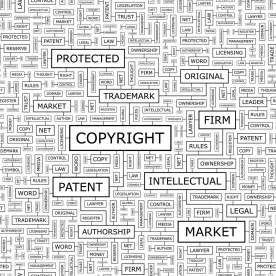Consider Provisional Patent Filings
Filing a provisional patent application in the U.S. is often a useful strategy for start-up tech companies. A provisional patent application allows a company to preserve an earlier filing date at a minimal expense and delays a much more significant expenditure associated with a non-provisional application by one year. By the anniversary of the provisional application filing, a non-provisional application must be filed in order to take benefit of the provisional filing date. A provisional application is especially useful if it provides a detailed description of the invention and preferably explains valuable alternative implementations. Otherwise any new subject matter added to the non-provisional application will not be given the benefit of the provisional application filing date.
Options for Non-Provisional Patent Filings
With the enactment of the Leahy-Smith America Invents Act (AIA) in 2011, there are now multiple opportunities to speed up the patenting process for which companies, such as those focusing on nanotechnology related inventions, can take advantage when filing a non-provisional. The two main options are (1) prioritized examination and (2) accelerated examination.
-
Prioritized Examination
Part of the AIA is the creation of a Prioritized Examination (PE) process that allows applicants to request accelerated examination in exchange for payment of an additional fee ($4,000 or $2,000 for a small entity of less than 500 employees). The goal is for qualified U.S. patent applications to reach final disposition within 12 months. Needless to say, this procedure provides inventors and business entities with an inexpensive alternative to the regular patent prosecution route, which on average can take up to about three years or more before reaching final disposition.
As such, for those who are in industries where products may have a relatively short shelf life, which can be particularly true for certain areas nanotechnology, who trade patent rights for investment or licensing opportunities, and/or regard patent rights as an important defensive tool against infringers, the incentives are high in utilizing this procedure to significantly expedite patent prosecution.
The PE procedure is a part of an effort by the USPTO to “provide applicants with greater control over when their utility and plant applications are examined and to promote greater efficiency” in the patent examination process. However, the number of PE Requests is limited in each fiscal year to a maximum of 10,000, subject to further evaluation and change by the USPTO.
The PE procedure offers a significant shortening of the time spent in the examination and prosecution of an application. The USPTO’s goal is to provide, on average, a final disposition (typically one of mailing of a Notice of Allowance; mailing of a Final Office action; filing of a Notice of Appeal; filing of a Request for Continued Examination; or abandonment of the application) within 12 months of prioritized status being granted.
Thus, PE can offer a quick, inexpensive option for obtaining patent protection, as opposed to the traditional route where the application can wait in queue for 2-4 years before it is examined.
-
Accelerated Examination
Accelerated Examination (AE) program established on Aug. 26, 2006, is also available as a strategy. Similar to the PE program, a patent application filed under the AE program can expedite the prosecution process in order to allow the application to reach final disposition within 12 months. However, whereas the PE program prioritizes an application for prosecution ahead of applications filed under the standard procedure, the AE program prioritizes and accelerates the actual prosecution process of the application.
One of the major differences between the PE and AE programs is the AE program requires a pre-examination search document (PESD) and an accelerated examination support document (AESD) to illustrate how the claims of the AE application are allowable over known related art. The pre-examination search and the preparation of the PESD along with the AESD can be time consuming and expensive, and on average can be as much as or more than the costs of preparing the application itself.
However, while the AE program may involve significant upfront costs, it does not necessarily mean the total cost of prosecution under the AE program will be more expensive than the total cost of the PE program over the lifetime of an application. Moreover, the time spent in searching for related art and in improving/focusing the claims can yield stronger claim sets, which can contribute to faster allowance, possibly within months of being accepted into the AE program. Without such thoroughly analyzed claim sets, an applicant in the PE program may end up spending much time and effort going back and forth with the examiner to achieve allowance.
Prosecution between an AE application and a PE application can also be different. Whereas the period for responding on an office action for a PE application is set for three months, for AE application, the period for responding to an office action is one month. Failure to respond within this strict time period will result in abandonment of the application. 
Strictly looking at the filing fees (i.e., not the costs of prepare the application), other than a petition fee of $130, there are no additional fees for filing an application under the AE program, other than the typical fees associated with filing.
Additionally, while the PE program is limited to 10,000 applications per USPTO fiscal year, no such limit exists on the number of AE applications.
Choosing the Right Path(s)
Electing among the various types of examination (prioritized, accelerated, expedited, and regular) is best decided on a case-by-case basis dependent on the circumstance. This is because one size does not fit all even with respect to related patent applications. It is best to consult your patent counsel on the best strategy.




 />i
/>i

